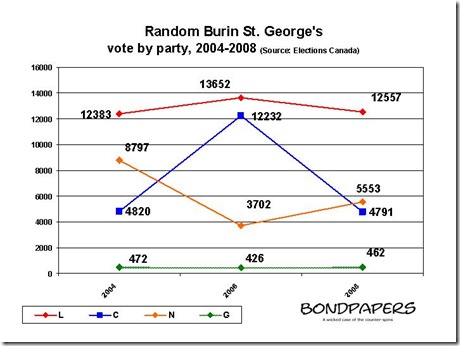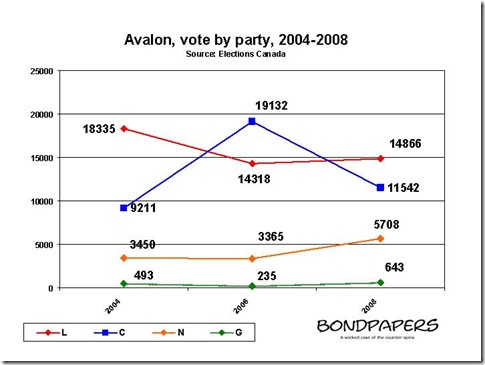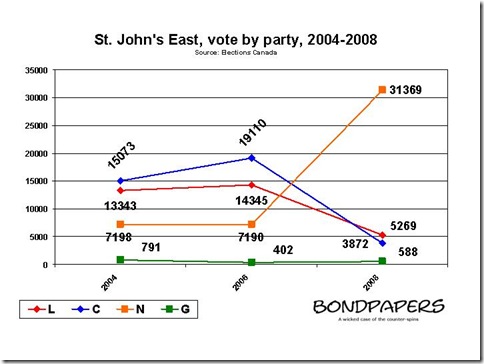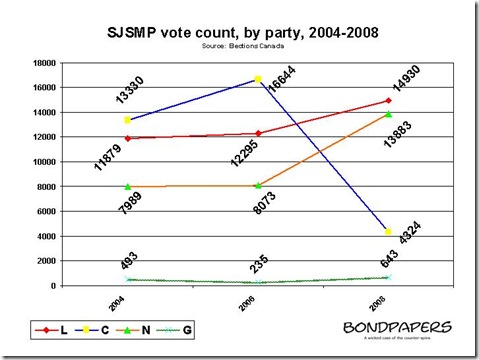 Random-Burin-St. Georges is a relatively new seat resulting from re-apportionment before the 2004 election.
Random-Burin-St. Georges is a relatively new seat resulting from re-apportionment before the 2004 election.
However, the seat continues to trend as a decidedly Liberal seat, carrying on the trend pre-2004.
The 2008 result is not the one to look at closely here. rather we need to look at 2006.
That was the year the Provincial Conservatives threw their political weight behind the federal Conservative party.
The Blue team ran a staunch Provincial Conservative closely associated with the Premier.
She had campaigned relentlessly between 2004 and 2006 against the incumbent, largely by using a refugee family's plight in a church basement as a rod with which to beat the incumbent and his party.
It apparently escaped her notice that the party she ran for had a policy diametrically opposed to her own stated position on this issue. In the end, her campaign was also caught up in the in-out scheme even though, as these results show, Random-Burin-St. Georges was not a lost cause for the Blue team.
The New Democrats ran a candidate from outside the riding in that election. Not surprisingly, she fared considerably worse than the popular fisheries activist the NDP had run in 2004.
In that race, the Conservatives appear to have pulled voters who had voted NDP in 2004 and added a few thousand more besides. The Liberal candidate - Bill Matthews - also increased his vote share. Overall, turnout in the riding increased by slightly less than 4,000 voters.
What we don't see here is a collapse of the Conservative vote. Rather, in 2008, it sank back to what essentially appears to be its core. The New Democrat vote declined by 3244 but did not slip back to its 2006 level. The Liberal vote declined by 1100 votes.
Overall, it would appear that the New Democrats in 2008 had picked up some soft vote that in 2006 had gone to the Conservatives. The bulk of the 2006 Conservative vote stayed home.
More than in some others, the vote pattern in this riding may have been affected by the remittance labour force from the Burin Peninsula currently working in Alberta. Without more detailed analysis it is difficult to know how much of this vote pool actually turned out and if it did, how it voted.
Even though the 2006 incumbent did not seek re-election, this is not a riding that was affected by Family Feud as obviously as in the three ridings on the Avalon peninsula.
It is interesting to speculate, though, what might have happened had the Provincial Conservatives taken an entirely different approach in 2008.
-srbp-


